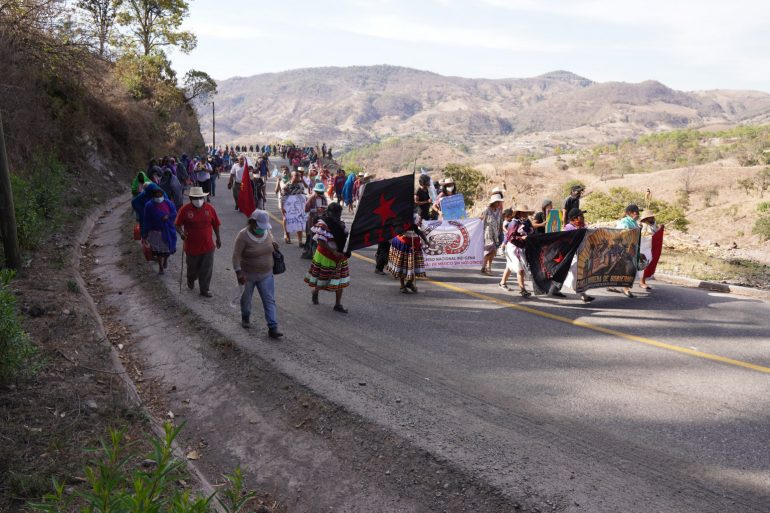What is solarpunk?
On a planet that has been decimated by capitalism, colonialism, authoritarianism, and ecocide, the dominant narrative has been that there is no alternative. This is the way things are and forever shall be.
Each generation has been fed the narrative that the status quo is here to stay. Yet a multifaceted new movement has defiantly arisen in opposition to this narrative. A movement that dares to imagine the utopic potential of total social, ecological, political, and economic transformation for a generation without hope.
This movement, known as solarpunk, aims to provide a shining vision of a positive future, both aesthetic and practical, to motivate action to bridge the chasm between human society and the natural world.
How did solarpunk emerge?
There are multiple facets to the solarpunk movement. Initially coined as an online term in the late 2000s and early 2010s to describe a potential literary genre – in contrast to the corrupted fiction of cyberpunk –the movement quickly grew to encompass a range of diverse artistic expressions, the punk ethos of the do-it-yourself movement, and the political imagination of various ecologically-inclined anarchic radicals.
Solarpunk’s emphasis on sustainability, autonomy, and social justice has made it especially attractive to anti-capitalist movements in need of new imaginaries to explore and realise, as it aims beyond merely what we must avoid and pushes towards a vision of what we can hope for.
It represents creative, autonomous people nested in resilient and sustainable communities moving in lockstep with their bioregion. It is a breath of fresh air in a political discourse polluted by the limitations of the present.
How does solarpunk relate to climate justice?
Solarpunk presents us with an opportunity to explore new dimensions of climate justice and develop our imagination of political and economic possibilities, provided that we avoid the many pitfalls of the climate movement as is.
Climate justice is a recognition of the need to address the differing social, economic, health, and other adverse impacts of climate change on marginalised populations throughout the world. All climate impacts are not created equal. Heatwaves, air pollution, rising sea levels, drought, and more disproportionately impact some communities over others.
It is necessary to explore ways we can address these discrepancies in existing social conditions and future impact. Issues such as food autonomy and access to housing, clean energy, and public transportation are championed by solarpunks as potential paths to climate justice.
However, these efforts are necessarily pursued on a grassroots level, because the solarpunk movement recognises that we cannot continue to wait for our salvation to come from capitalism or the state.
How does solarpunk relate to degrowth?
The overlap between solarpunk and the degrowth movement can be found in the understanding that capitalism’s built-in imperative to grow, expand, exploit, and profit endlessly cannot continue in the context of a finite planet.
The degrowth movement is about rejecting the global capitalist system’s pursuit of endless growth and advocating for a world based in care, solidarity, and autonomy in which our social and ecological well-being are at the forefront.
Degrowth means climate justice and a good life for all within planetary boundaries.
Although aspects of solarpunk and degrowth may benefit from particular government policies, these movements cannot rely on the state. The state is structurally unsuited to ecological restoration, and can even potentially operate as an obstacle.
The inherently violent and ecocidal character that has marked states from their earliest inception and up to their present incarnations does not lend itself to our liberation. Top-down approaches have consistently failed where local approaches to rewilding have succeeded.
The solarpunk movement emphasises local power, local organising, and local autonomy because the world we envision cannot be imposed from above.
A forest is more than its trees; ecological restoration requires intimate knowledge with the local nuances of the land, the water cycle, and the network of microorganisms, fungi, plants, and animals that sustain it.
Our planet will be healed on the grassroots level. We will need to circumvent the impositions of those in power through direct action to bring a solarpunk world into being.
What is the role of imagination in solarpunk?
Solarpunk requires the cultivation of our imagination. For far too long, our collective consciousness has been drifting towards despair and doomerism. This system has drained us and the trauma it has generated corrodes our ability to imagine real social transformation. If we wish to be free, we must do so together. We must foster our empathy, our creative abilities, and our practical skills to envision and then enact a more positive trajectory. The critical importance of imagination cannot be left to languish. Though we are surrounded by monocultures, monopolies, and the monotonies of modern life, our imagination must be fed by diversity. The solarpunk movement encourages all of us to reintegrate ourselves with the natural world so that we may draw from its palette of possibilities. If you want to spark your imagination, start by getting your hands dirty. Literally.
Who are key players in the solarpunk movement?
Open Source Ecology
- The folks at Open Source Ecology aim to build a world of collaborative design for “a transparent and inclusive economy of abundance.” Their main project is the Global Village Construction Set (GVCS), a set of 50 open source blueprints for everything from an oven to a bulldozer to a 3D printer.
Grassroots organisations
- The vast majority of successful solarpunk projects, whether they use the term or not, occur on the grassroots level. These maps of makerspaces, tool libraries, free pantries, seed libraries, and repair cafes demonstrate only some of the action taking place around the world in the realm of building community resilience.
What mistakes should we avoid?
We must not let the current failures of the climate movement restrict the possibilities of the solarpunk movement, namely greenwashing, techno optimism, and soft climate change denial.
- The infiltration of greenwashing in the climate movement has been a grave pitfall. This form of marketing spin uses the aesthetic of eco-friendliness without any of the substance. Greenwashing is an attempt to give a green thumb to the cold and withering hand of capitalism, but it fails in that regard. In fact, it often serves as a thin veneer for seriously environmentally destructive practices, particularly in agriculture, fashion, and architecture. It is unfortunately not uncommon to see concrete skyscrapers covered in shrubbery in solarpunk artwork. Such depictions lean on popular notions of “greenness” to push forward an environmentally friendly image without understanding the very real impact of such designs on people and planet.
- The blind and overly optimistic embrace of technology by some may be another potential pitfall of the solarpunk movement. We must consider the consequences of such technologies in context. Rare earth minerals and the exploitative labour conditions that procure them for neocolonial supply chains cannot be swept aside. Modern technology has been built on exploitation. Ignoring the immense suffering that goes into the production of technology will not make those issues go away. Unless we want a future in which “clean” energy has blood on its hands, we must be more cognisant of the human and environmental consequences of such technology. In the spirit of solarpunk, we should also examine the potential of low-tech, DIY solutions, as found in the articles of Low-Tech Magazine.
- Lastly, soft climate change denial continues to plague the solarpunk movement and the broader environmental movement. Soft climate change denial is a state of mind that acknowledges the existence of climate change while remaining, to varying extents, in partial psychological or intellectual denialism about its reality or impact. With so many climate scientists falling into despair, the rise of soft climate change denial is entirely understandable. It’s a form of psychological isolation, where emotionally challenging thoughts are cordoned off from the rest of our minds as a defense mechanism. It takes tremendous mental fortitude to truly engage with the scope of this crisis, let alone imagine a path forward. Although people in soft climate denial acknowledge climate change, they may neglect its existential urgency, miscalculate its risks, overestimate the extent of scientific uncertainty, and underestimate the extent of social change required to effectively mitigate climate change. We are long past the point where such misjudgements can be accommodated.
The solarpunk movement needs to recognise the diversity of tactics necessary for us to survive the ongoing consequences of climate change and mitigate future consequences, not through gradualism, but instead through direct action, which does not rely on reform from above, and prefigurative politics, an approach which aims to build the networks, institutions, and infrastructure of the future in the here and now.
Who are key players in the solarpunk movement?
Wherever there are ongoing projects for climate justice and imaginative explorations of sustainable living, rewilding, developing a DIY ethos, expanding the right to repair and the modularity of our technology, improving urban walkability, and more, the seeds for a solarpunk future are being sown.
Solarpunk may be one of many paths toward the recovery of our social body and natural world. We can regain the bonds of community to think, plan, coordinate, and implement decisions for social and ecological benefit. Humanity can reclaim its role as a co-cultivator of the complex workings of our home, this superorganism we call Earth.
What can you do?
- Andrewism is a YouTube channel that focuses on the intersections between anarchism, anthropology, history, ecology, economy, Blackness, and more, with a particular emphasis on real world solutions and the practical potential of solarpunk.
- Our Changing Climate is a YouTube channel that investigates humanity’s relationship to the natural world and all that entails.
- Think That Through is a YouTube channel that explores various aspects of climate change, the capitalocene, greenwashing, and more.
- Andrew Millison is a YouTube channel that provides excellent resources on ecosystem restoration, permaculture, and ongoing projects in the field.
- Ecotopia by Ernest Callenbach is an excellent utopia novel written in 1975 that explores one potential, though flawed, manifestation of solarpunk principles in an alternative Cascadia. The author has noted that, “It is so hard to imagine anything fundamentally different from what we have now. But without these alternate visions, we get stuck on dead center. And we’d better get ready. We need to know where we’d like to go.”















